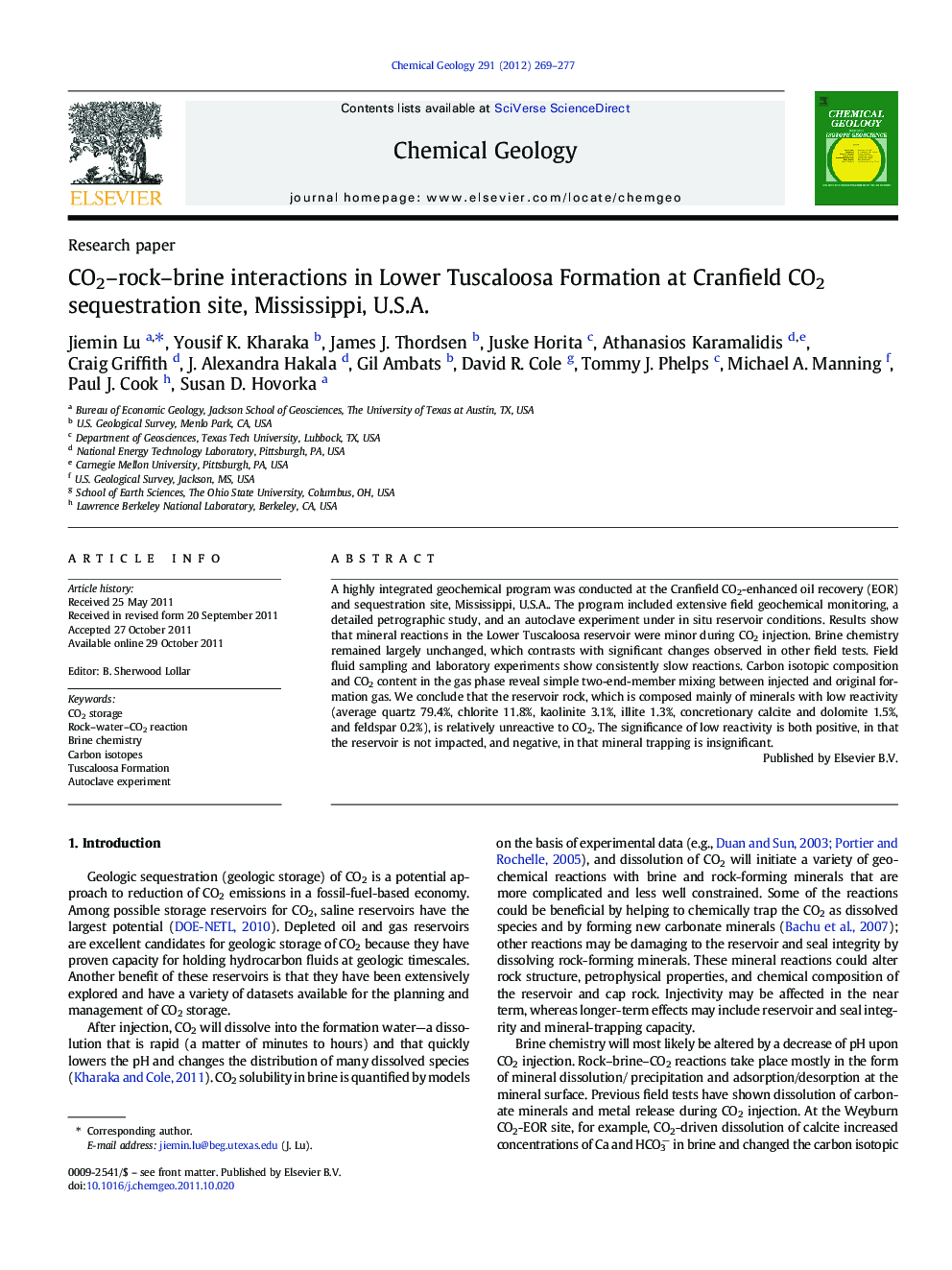| Article ID | Journal | Published Year | Pages | File Type |
|---|---|---|---|---|
| 4699587 | Chemical Geology | 2012 | 9 Pages |
A highly integrated geochemical program was conducted at the Cranfield CO2-enhanced oil recovery (EOR) and sequestration site, Mississippi, U.S.A.. The program included extensive field geochemical monitoring, a detailed petrographic study, and an autoclave experiment under in situ reservoir conditions. Results show that mineral reactions in the Lower Tuscaloosa reservoir were minor during CO2 injection. Brine chemistry remained largely unchanged, which contrasts with significant changes observed in other field tests. Field fluid sampling and laboratory experiments show consistently slow reactions. Carbon isotopic composition and CO2 content in the gas phase reveal simple two-end-member mixing between injected and original formation gas. We conclude that the reservoir rock, which is composed mainly of minerals with low reactivity (average quartz 79.4%, chlorite 11.8%, kaolinite 3.1%, illite 1.3%, concretionary calcite and dolomite 1.5%, and feldspar 0.2%), is relatively unreactive to CO2. The significance of low reactivity is both positive, in that the reservoir is not impacted, and negative, in that mineral trapping is insignificant.
► We monitored brine and gas chemistry at Cranfield CO2 injection site, M.S. ► Brine chemistry remained stable. ► An autoclave reaction experiment reproduced field observations. ► Unique reservoir mineralogy and texture limit CO2 reactions.
